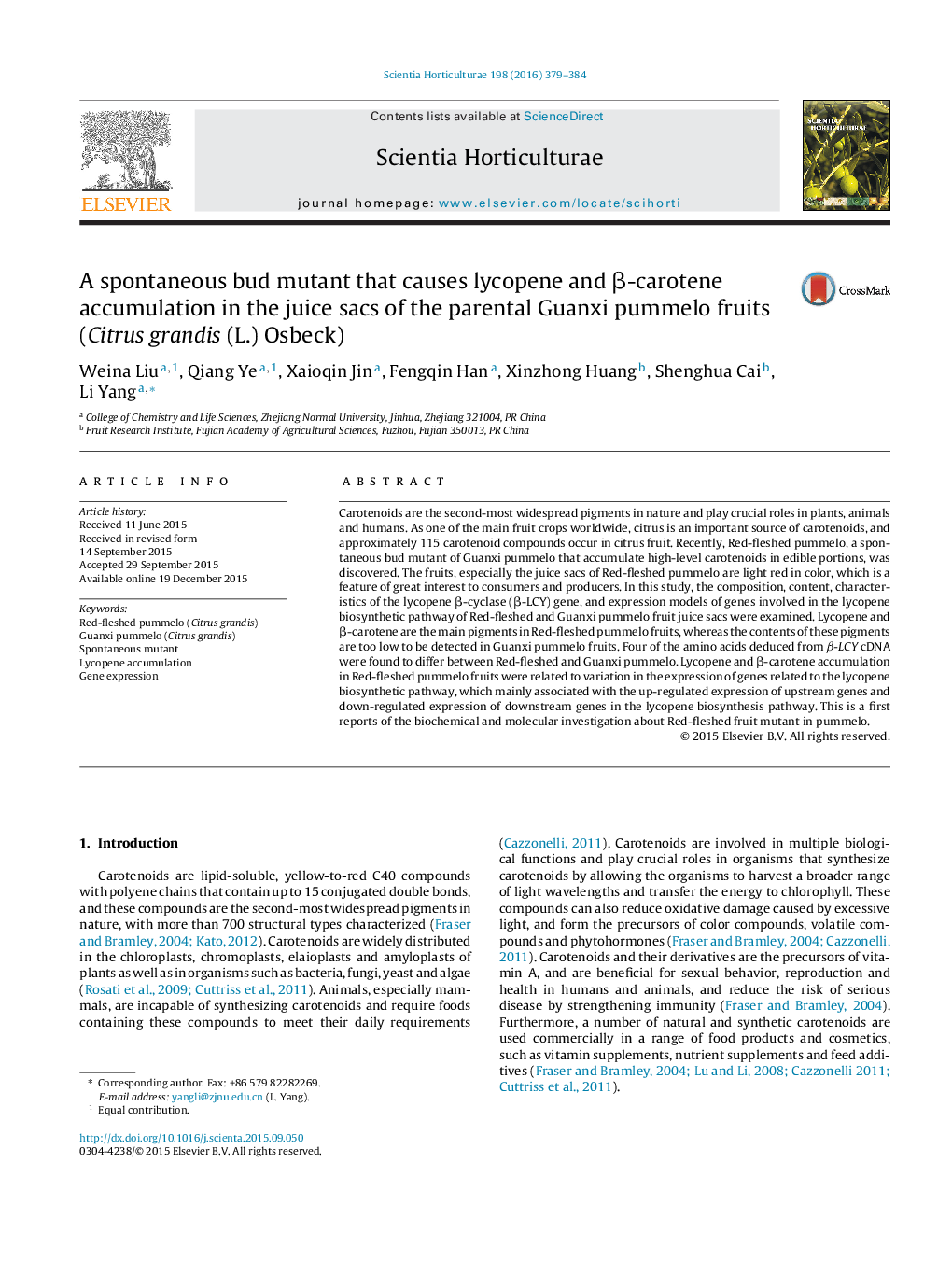| Article ID | Journal | Published Year | Pages | File Type |
|---|---|---|---|---|
| 6406602 | Scientia Horticulturae | 2016 | 6 Pages |
â¢Red-fleshed pummelo is a spontaneous bud mutant from Guanxi pummelo fruits.â¢High-level lycopene and β-carotene is accumulated in the edible portions of Red-fleshed pummelo.â¢CgCRTISO, CgPSY and Cgβ-LCY appeared to be the key genes of carotenoid accumulation in Red-fleshed pummelo.
Carotenoids are the second-most widespread pigments in nature and play crucial roles in plants, animals and humans. As one of the main fruit crops worldwide, citrus is an important source of carotenoids, and approximately 115 carotenoid compounds occur in citrus fruit. Recently, Red-fleshed pummelo, a spontaneous bud mutant of Guanxi pummelo that accumulate high-level carotenoids in edible portions, was discovered. The fruits, especially the juice sacs of Red-fleshed pummelo are light red in color, which is a feature of great interest to consumers and producers. In this study, the composition, content, characteristics of the lycopene β-cyclase (β-LCY) gene, and expression models of genes involved in the lycopene biosynthetic pathway of Red-fleshed and Guanxi pummelo fruit juice sacs were examined. Lycopene and β-carotene are the main pigments in Red-fleshed pummelo fruits, whereas the contents of these pigments are too low to be detected in Guanxi pummelo fruits. Four of the amino acids deduced from β-LCY cDNA were found to differ between Red-fleshed and Guanxi pummelo. Lycopene and β-carotene accumulation in Red-fleshed pummelo fruits were related to variation in the expression of genes related to the lycopene biosynthetic pathway, which mainly associated with the up-regulated expression of upstream genes and down-regulated expression of downstream genes in the lycopene biosynthesis pathway. This is a first reports of the biochemical and molecular investigation about Red-fleshed fruit mutant in pummelo.
